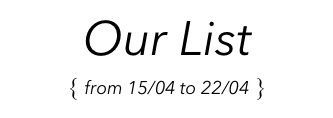Kasimir Malévich's Black Square...
12:30 p.m.
09/19/16 - Finally, the much awaited exhibition of Kasimir Malevich's artworks (Russia, 1878-1935) reached PROA, in Buenos Aires. It is the first time that the artistic history of such a revolutionary man reaches these coasts. His artworks were spread out in different European museums and in December 1988 they were brought together in a retrospective organised by the Stedelijk Museum in Amsterdam, Moscow's Tretyakov State Gallery and the State Russian Museum.
The exhibition opens with a time line that unites world history with the life of the artist. The following room displays his first artworks, those in which we can see the influence of other artistic movements, like cubo-futurism (the synthesis between the first experiences of the futuristic and Picasso's aesthetic). Malevich recreates Leonardo da Vinci's Gioconda, in a smaller scale, in a painting that suggests the dispute between Renaissance and geometry. Her face appears crossed out in red, meaning that geometric shapes represent the new masterpieces.
Portrait of Ivan Kliun, by Kasimir Malevich (1913)
Technique: oil on canvas
Composition with La Gioconda, by Kasimir Malevich (1914)
Technique: oil, graphite and collage on canvas
Suprematism (Supremus Nro 58), by Kasimir Malevich (1916)
Technique: oil on canvas
The main room houses the three most iconic and awaited artworks in all his career: Black Square, Black Cross and Black Circle.
With "Black Square", Malevich takes his painting to ground zero, the limit of abstraction. From there, he begins a new path in which geometric shapes oppose the traditional approach of reaching the three-dimensions on a two-dimension format. This caused a breakup with the past centuries and offered the public an inventive art, rather than an illustrative one. This revolutionary experience was baptised by Malevich with the term Suprematism. Art and Science come together, because for Malevich, the matter is the origin of everything, the ground zero of the Universe. The primitive geometric shapes are the result of the reduction of the objective world.
"I left behind the figurative world and moved towards the whiteness, the colors and the blackness. In that precise moment, cubism and futurism vanished. And, in replacement, Suprematism appeared, colourful and colourless."
(Kasimir Malevich, 1923)
Black Square, by Kasimir Malevich (ca. 1923)
Technique: oil on canvas
Black Cross, by Kasimir Malevich (1923)
Technique: oil on canvas
Black Circle, by Kasimir Malevich (1923)
Technique: oil on canvas
After the Black Square, Malevich worked on "Red Square", that represented a peasant with a red caftan, a typical working outfit of the day. For the artist, the world of figuration was no longer necessary to portray reality. Color and shapes are enough.
Red Square (pictorial realism of a peasant in two dimensions), by Kasimir Malevich (1915)
Technique: oil on canvas
“We've seen that the problem did not lie in the color or the shape, but in the relationship of the artist with the Universe, and his feelings.”
(Attempt to define the relationship between color and shape in the painting, by Kasimir Malevich, 1930)
Towards 1929 he returns to the painting with an easel and progressively incorporates figuration, but with a Suprematistic aesthetic. In 1933 he is diagnosed with cancer and dies in 1935. "Black Square" kept him company till the very end.
Girls in a field, by Kasimir Malevich (1928-1929)
Technique: oil on canvas
Head of a peasant, by Kasimir Malevich (1928-1929)
Technique: oil on canvas
Worker, by Kasimir Malevich (1933)
Technique: oil on canvas
Self-Portrait ("Artist"), by Kasimir Malevich (1933)
Technique: oil on canvas
United States and Europe returned to monochromy some decades after World War II. In Argentina, during the 40s and 50s, science was paired with art, a concept belonging to Suprematism's basic principles. Raúl Loza (Argentina, 1911-2008) created his artworks inspired by the studies of the constant expansion of the Universe.
Keep reading... "Kasimir Malevich Retrospectiva", Exhibition Catalogue, Fundación Proa, 2016.


















0 comentarios